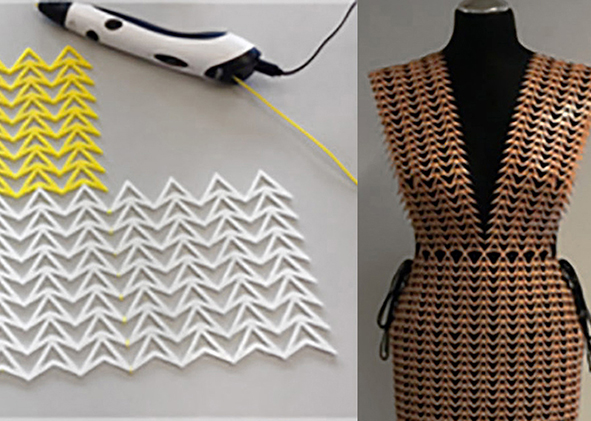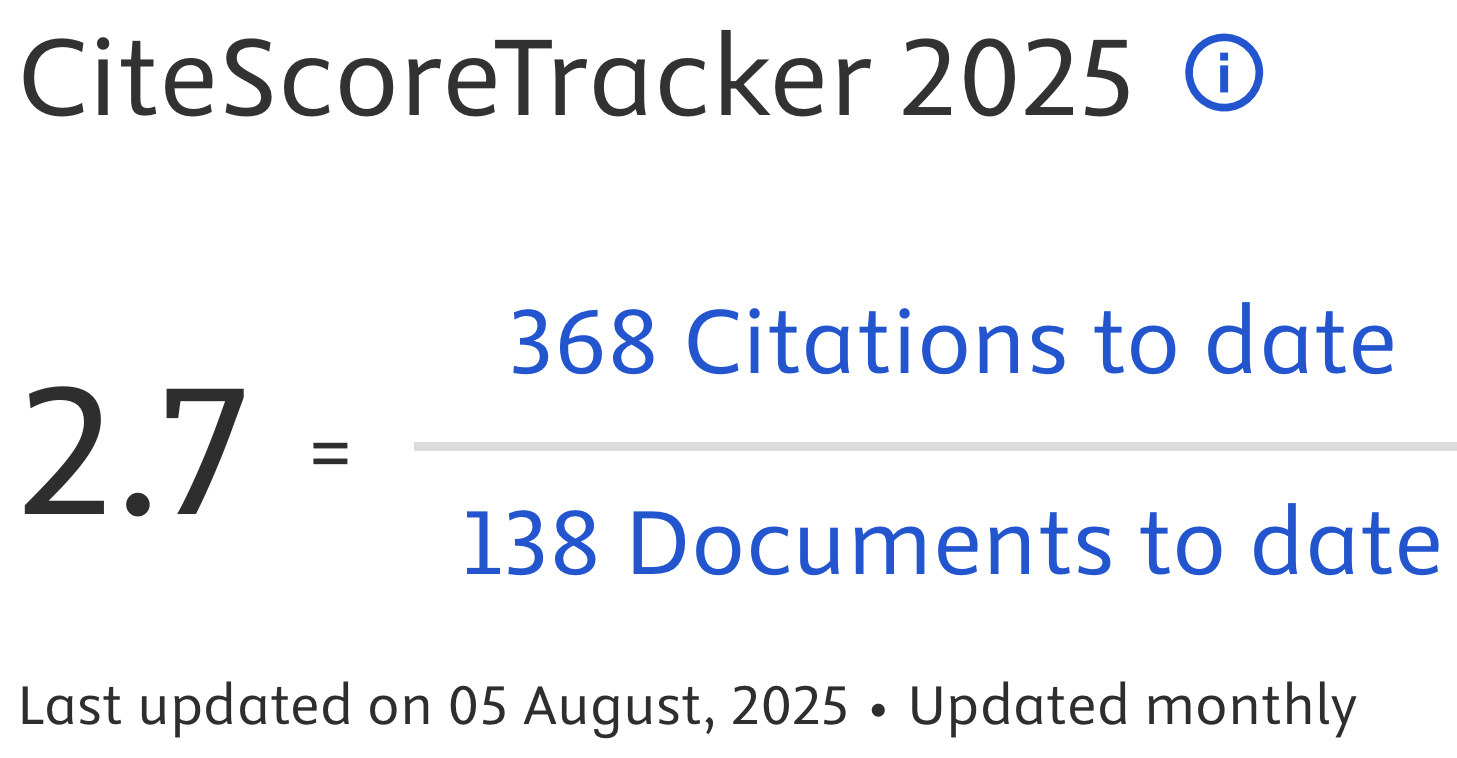Fashion and modular design – Modularity as a design strategy for sustainability
DOI:
https://doi.org/10.19229/2464-9309/14282023Keywords:
modular fashion, fashion and technology, Industry 4.0, modularity, sustainabilityAbstract
Fashion occupies an essential place in today’s society not only because of the production of garments and their impact at the end of their life but also because of the economic, cultural and social dynamics it determines. Modular design is a valuable strategy for creating complex systems from configurable, separable and adaptable modules that can influence sustainability. Through the review of scientific literature integrated with case studies from the professional world, this paper categorises current implementations of modular fashion design, highlighting the system architecture and describing opportunities and limitations regarding environmental, economic, cultural and social sustainability. From the analysis emerges the need for a multidisciplinary investigation of the topic through the study of new business models and Industry 4.0 technologies employing a design-led approach that deals with the design of products and services and consumption behaviour.
Article info
Received: 10/09/2023; Revised: 16/10/2023; Accepted: 22/10/2023
Downloads
Article Metrics Graph
References
Ballie, J. and Woods, M. (2018), “Circular by Design – A model for engaging fashion/textile SMEs with strategies for designed reuse”, in Crocker, R., Saint, C., Chen, G. and Tong, Y. (eds), Unmaking Waste in Production and Consumption – Towards the Circular Economy, Emerald Publishing Limited, Bingley, pp. 103-121. [Online] Available at: doi.org/10.1108/978-1-78714-619-820181010 [Accessed 12 October 2023].
Bertola, P. and Teunissen, J. (2018), “Fashion 4.0 – Innovating fashion industry through digital transformation”, in Research Journal of Textile and Apparel, vol. 22, issue 4, pp. 352-369. [Online] Available at: doi.org/10.1108/rjta-03-2018-0023 [Accessed 12 October 2023].
Bonvoisin, J., Halstenberg, F., Buchert, T. and Stark, R. (2016), “A systematic literature review on modular product design”, in Journal of Engineering Design, vol. 27, issue 7, pp. 488-514. [Online] Available at: doi.org/10.1080/09544828.2016.1166482 [Accessed 12 October 2023].
Buchel, S., Roorda, C., Schipper, K. and Loorbach, D. (2018), Drift for transition – The transition to good fashion. [Online] Available at: drift.eur.nl/wp-content/uploads/2018/11/FINAL_report.pdf [Accessed 12 October 2023].
Brown, S. and Vacca, F. (2022), “Cultural sustainability in fashion – Reflections on craft and sustainable development models”, in Sustainability | Science, Practice and Policy, vol. 18, issue 1, pp. 590-600. [Online] Available at: doi.org/10.1080/15487733.2022.2100102 [Accessed 12 October 2023].
Chapman, J. (2009), “Design for (Emotional) Durability”, in Design Issues, vol. 25, n. 4, pp. 29-35. [Online] Available at: jstor.org/stable/20627827 [Accessed 12 October 2023].
Chen, C. (2022), “Modular Illusion”, in International Textile and Apparel Association | Annual Conference Proceedings, vol. 79, issue 1, pp. 1-5. [Online] Available at: doi.org/10.31274/itaa.16013 [Accessed 12 October 2023].
Chen, C. (2020), “Vanishing Ice”, in International Textile and Apparel Association | Annual Conference Proceedings, vol. 77, issue 1, pp. 1-4. [Online] Available at: doi.org/10.31274/itaa.11743 [Accessed 12 October 2023].
Chen, C. and Lapolla, K. (2021), “The Exploration of Geometric Modular System in Textile and Apparel Design”, in Clothing and Textiles Research Journal, vol. 39, issue1, pp. 39-54. [Online] Available at: doi.org/10.1177/0887302X20937 [Accessed 12 October 2023].
Cramer, J. (2014), “Wear, repair and remake – The evolution of fashion practice by design”, in Shapeshifting Conference, Auckland University of Technology, 14-16 April 2014, Textile and Design Lab and Colab at Auckland University of Technology, Auckland (New Zealand), pp. 1-18. [Online] Available at: core.ac.uk/reader/56365031 [Accessed 12 October 2023].
Dan, M. C., Ciortea, A. and Mayer, S. (2023), “The refashion circular design strategy – Changing the way we design and manufacture clothes”, in Design Studies, vol. 88, pp. 1-28. [Online] Available at: doi.org/10.1016/j.destud.2023.101205 [Accessed 12 October 2023].
Ellen MacArthur Foundation (2017), A new textiles economy – Redesigning fashion’s future. [Online] Available at: ellenmacarthurfoundation.org/a-new-textiles-economy [Accessed 12 October 2023].
Ellen Macarthur Foundation (2013), Towards the Circular Economy – An Economic and Business Rationale for an Accelerated Transition – Vol. 1. [Online] Available at: ellenmacarthurfoundation.org/towards-the-circular-economy-vol-1-an-economic-and-business-rationale-for-an [Accessed 12 October 2023].
Fletcher, K. (2014), Sustainable Fashion and Textiles – Design Journeys, Routledge, New York.
Gustafsson, J. (2017), Single case studies vs. multiple case studies – A comparative study, pp. 1-15. [Online] Available at: diva-portal.org/smash/get/diva2:1064378/FULLTEXT01.pdf [Accessed 12 October 2023].
Gwilt, A. (2014), A Practical Guide to Sustainable Fashion, Bloomsbury Publishing Plc, London.
Hur, E. (2015), “Sustainable Fashion and Textiles through Participatory Design – A case study of modular textile design”, in The Journal of the Korean Society of Knit Design, vol 13, issue 3, pp. 100-109. [Online] Available at: researchgate.net/publication/ 304257277_Sustainable_ Fashion_and_Textiles_through_Participatory_Design_A_case_study_of_ modular_textile_design [Accessed 12 October 2023].
Hur, E. S. and Thomas, B. G. (2011), “Transformative Modular Textile Design”, in Bridges Coimbra – Mathematical Connections in Art, Music and Science, Tarquin Publications, pp. 217-224. [Online] Available at: wiki.textile-academy.org/_media/bootcamp2017paris/bridges2011-217.pdf [Accessed 12 October 2023].
Karrel, E. (2014), Planned Continuity – Design of sustainable clothing service concept, Master Thesis, Aalto University Department of Design. [Online] Available at: research.aalto.fi/en/publications/planned-continuity-design-of-sustainable-clothing-service-concept [Accessed 12 October 2023].
Kasper, M. and Stroomer, E. (2021), “Moltiplicare le vite dei tessuti – Raccolta e riciclo dei tessuti nell’Africa urbanizzata | Multiplying textile lives – Textile collection and recycling in urban Africa”, in Agathón | International Journal of Architecture Art and Design, vol. 9, pp. 224-231. [Online] Available at: doi.org/10.19229/2464-9309/9222021 [Accessed 12 October 2023].
Koo, H. S. (2012), Design Functions in Transformable Garments for Sustainability, Doctoral Thesis, University of Minnesota. [Online] Available at: conservancy.umn.edu/handle/11299/133808 [Accessed 12 October 2023].
Koo, H. S., Dunne, L. and Bye, E. (2014), “Design functions in transformable garments for sustainability”, in International Journal of Fashion Design, Technology and Education, vol. 7, issue 1, pp. 10-20. [Online] Available at: doi.org/10.1080/17543266.2013.845250 [Accessed 12 October 2023].
Koo, H. S., Dunne, L. and Bye, E. (2013), “Design Functions in Transformable Garments for Sustainability”, in International Textile and Apparel Association | Annual Conference Proceedings, vol. 70, issue 1, pp. 38-39. [Online] Available at: iastatedigitalpress.com/itaa/article/id/1977/ [Accessed 12 October 2023].
Kusiak, A. (1999), Engineering Design – Products, Processes, and Systems, Academic Press, Cambridge.
Lee, H., Tufail, M. and Kim, K. (2016), “Difficulties in Transformable Design and its Causes”, in Marjanovic, D., Storga, M., Pavkovic, N., Bojcetic, N. and Skec S. (eds), DS 84 | Proceedings of the Design 2016 14th International Design Conference, pp. 2147-2156. [Online] Available at: designsociety.org/publication/39023/DIFFICULTIES+ IN+TRANSFORMABLE+DESIGN+AND+ITS+CAUSES [Accessed 12 October 2023].
Li, M.-M., Chen, Y. and Wang, Y. (2018), “Modular design in fashion industry”, in Journal of Arts & Humanities, vol. 7, issue 3, pp. 27-32. [Online] Available at: dx.doi.org/10.18533/journal.v7i3.1271 [Accessed 12 October 2023].
Maldini, I. and Balkenende, A. R. (2017), “Reducing clothing production volumes by design – A critical review of sustainable fashion strategies”, in Bakker, C. and Mugge, R. (eds), Product Lifetimes and The Environment 2017 – Conference Proceedings, Delft University of Technology, 8-10 November 2017, Delft University of Technology and IOS Press, pp. 233-237. [Online] Available at: doi.org/10.3233/978-1-61499-820-4-233 [Accessed 12 October 2023].
McLaren, A., Goworek, H., Cooper, T., Oxborrow, L. and Hill, H. (2016), “The effect of consumer attitudes on design for product Longevity – The case of the fashion industry”, in Lloyd, P. and Bohemia, E. (eds), Future Focused Thinking – DRS International Conference 2016, Brighton (UK), June 27-30, 2016, vol. 10, pp. 3831-3845. [Online] Available at: doi.org/10.21606/drs.2016.456 [Accessed 12 October 2023].
Meyer, M. H. and Lehnerd, A. P. (1997), The power of product platform – Building value and cost leadership, Free Press, New York.
Nadasbas, S. and Cileroglu, B. (2017), “Innovative approaches on modular apparel design”, in Global Journal of Arts Education, vol. 7, issue 3, pp. 73-82. [Online] Available at: doi.org/10.18844/gjae.v7i3.2974 [Accessed 12 October 2023].
Niinimäki, K. and Hassi, L. (2011), “Emerging design strategies in sustainable production and consumption of textiles and clothing”, in Journal of Cleaner Production, vol. 19, issue 16, pp. 1876-1883. [Online] Available at: doi.org/10.1016/j.jclepro.2011.04.020 [Accessed 12 October 2023].
Peter, J. (n.d.), “Transformable Fashion – The Biggest Sustainable Clothing Trend That Never Was”, in Fashion Studies Journal. [Online] Available at: fashionstudiesjournal.org/longform/2018/9/15/transformable-fashion [Accessed 12 October 2023].
Rahman, O. and Gong, M. (2016), “Sustainable practices and transformable fashion design – Chinese professional and consumer perspectives”, in International Journal of Fashion Design, Technology and Education, vol. 9, issue 3, pp. 233-247. [Online] Available at: doi.org/10.1080/17543266.2016.1167256 [Accessed 12 October 2023].
Spahiu, T., Canaj, E. and Shehi, E. (2020), “3D printing for clothing production”, in Journal of Engineered Fibers and Fabrics, vol. 15, pp. 1-8. [Online] Available at: doi.org/10.1177/1558925020948216 [Accessed 12 October 2023].
Tseng, M. M. and Wang, C. (2014), “Modular Design”, in Laperrière, L. and Reinhart, G. (eds), CIRP Encyclopedia of Production Engineering, Springer, Berlin, Heidelberg, pp. 895-897. [Online] Available at: doi.org/10.1007/978-3-642-20617-7_6460 [Accessed 12 October 2023].
Tufan Tolmaç, N. and İşmal, Ö. E. (2023), “A new era – 3D printing as an aesthetic language and creative tool in fashion and textile design”, in Research Journal of Textile and Apparel, vol. ahead-of-print, no. ahead-of-print. [Online] Available at: doi.org/10.1108/RJTA-05-2022-0058 [Accessed 12 October 2023].
Ulrich, K. T., Eppinger, S. D. and Yang, M. C. (1995), Product design and development, McGraw Hill, New York.
Watt, J. (2012), Fashion – The Ultimate Book of Costume and Style, Dorling Kindersley.
Yin, R. K. (2014), Case Study Research Design and Methods, Sage, Thousand Oaks (CA).

Downloads
Published
How to Cite
Issue
Section
Categories
License
Copyright (c) 2023 Daria Casciani

This work is licensed under a Creative Commons Attribution 4.0 International License.
This Journal is published under Creative Commons Attribution Licence 4.0 (CC-BY).
License scheme | Legal code
This License allows anyone to:
Share: copy and redistribute the material in any medium or format.
Adapt: remix, transform, and build upon the material for any purpose, even commercially.
Under the following terms
Attribution: Users must give appropriate credit, provide a link to the license, and indicate if changes were made; users may do so in any reasonable manner, but not in any way that suggests the licensor endorses them or their use.
No additional restrictions: Users may not apply legal terms or technological measures that legally restrict others from doing anything the license permits.
Notices
Users do not have to comply with the license for elements of the material in the public domain or where your use is permitted by an applicable exception or limitation.
No warranties are given. The license may not give users all of the permissions necessary for their intended use. For example, other rights such as publicity, privacy, or moral rights may limit how you use the material.


















































































